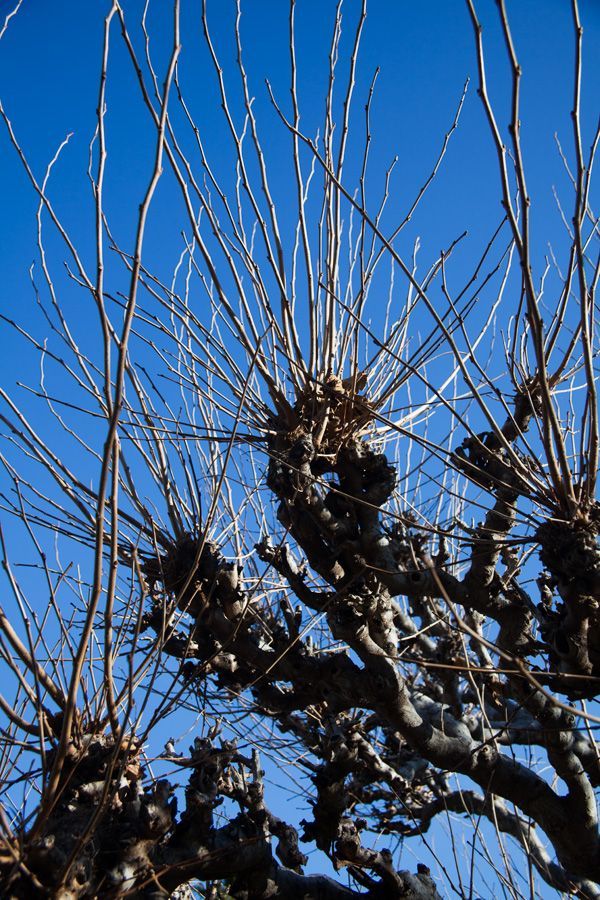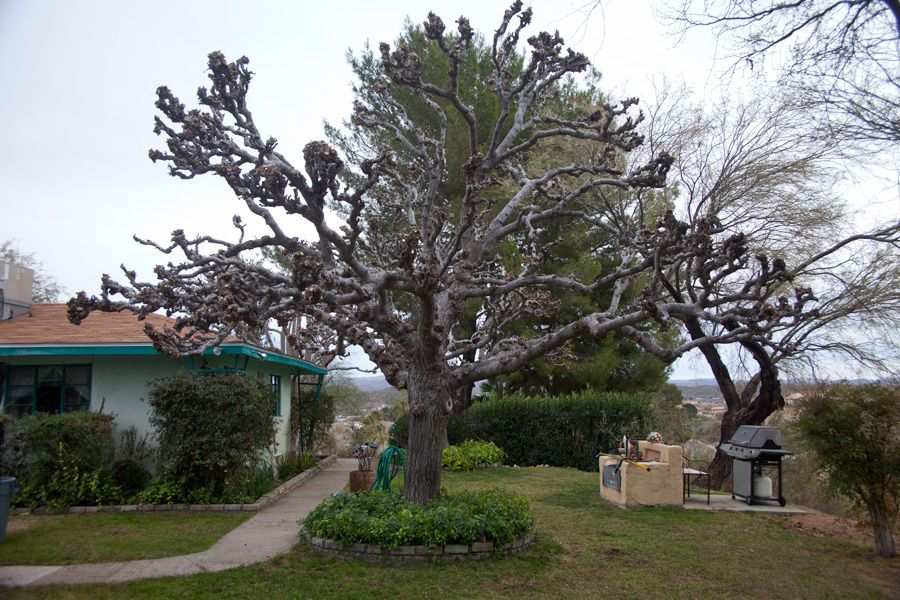New Paragraph
Pruning Pollard Mulberries
Pollarding is defined in the ISA Arborist’s CertificationStudy Guide as “A training system that involves severe heading the first year, and sprout removal annually or every few years to keep large-growing trees to a modest size or to maintain a formal appearance.” This produces an abundance of sprouts and may have formerly been used as a means of producing shoots for fuel, shelter and various products (baskets?). Pollarding needs to be started when the tree is very young and is not effective for all species. Mulberry trees (or at least the ones that we work on every year) seem to respond well to this technique. Most of the Mulberry trees in this area have been topped.. We have the opportunity to spend several days each winter working on three Mulberry trees that appearto have been properly pollarded in their youth, and that is what I would like to show you in this post.
Pollarding is started on a young tree by making internodal (topping) cuts at specific locations on the tree. After these initial cuts, there are no more internodal cuts made. Pollard heads, called knobs, develop at the site of the internodal cuts, and the tree produces sprouts at these points. These sprouts should be removed every year or two during the dormant season. Care is taken to not cut into the knobs or cut below the knobs. All the cuts made in the tree after the initial internodal cuts are correct pruning cuts.

Your headphones should always look amazing! Pick your preferred color.
Colorful
Trimming... and done!
Here is how we make most of the cuts on these trees. Only one of the three trees is partially lift accessible, so we mainly use ladders and climb the trees. We use handsaws for the larger branches and also do a little work with a small chainsaw (mostly removing larger dead branches) and a pole saw.



